TODAY’S TASK – Draw an object such as a table, chair, box, greenhouse, building – anything in fact that is 3 dimensional and has lots of straight lines. I hope you have been practicing as a result of yesterday’s task.
Try this method of indirect drawing – you scribble two layers of media on the left hand page. The principle of this carbon method is to build a layer of chalk onto the paper surface and then another layer of crayon. The crayon will not stick to the paper so can easily be lifted in the drawing method.
I suggest you make an initial experimental surface to find out what media you have available works best. If you know of other media, please let us all know.
I covered the top half of the page with a white chalk-like charcoal and the bottom half of the page with a coloured pastel. Then added second layers in vertical bands of 4 different ones I had – oil pastel, wax crayon, stabilo pencil and Markel oil stick. You can judge for yourself which ones worked best.
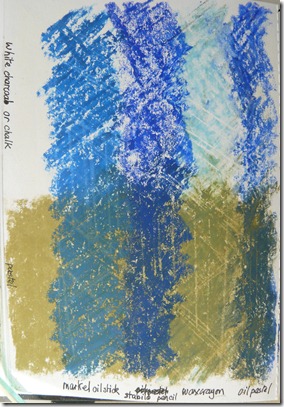
Turn your page over and make your drawing on the left hand page of this next pair of pages, using a firm, rounded (not sharp) point such as a biro. I used a ‘spent’ biro so that it only made deep colourless lines in the paper surface which I then smudged with a coloured pastel to show it better – I hope you can see the lines.
My drawn lines show the lines of my garden chair. I have taken each line out to the edge of the page. This gives the drawing interest and also allows you to check that your lines are tapering towards the top area – remember that shapes appear to get smaller as they are further from us – AND that all up-right lines remain upright!
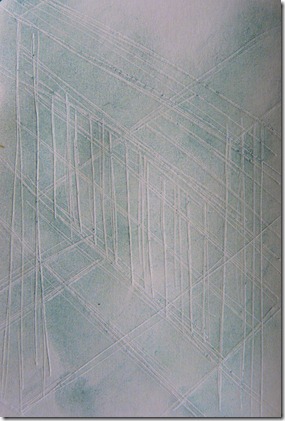
Turn your page back and look at the way your pressured lines have picked up the top layer of media from the opposite page. The wax crayon seems to have transferred least well, even though that is the traditional crayon to use.
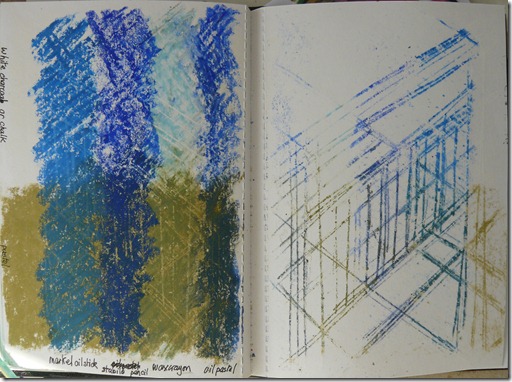
The drawing below is of a different view of my garden chair. I used white chalk and a layer of wax crayons on top as my carbon page.
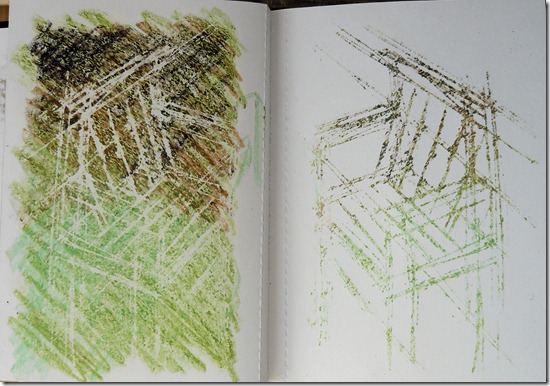
TODAY’S TIPS – Don’t scratch the lines as in a previous method – use a ball point pen so that you just make a deep mark with a lot of pressure.
You can transfer more of the ‘carbon’ colour by more drawing on the back of the next page of course. I continued with this one by scribbling over all the negative spaces around the chair. The carbon copy becomes a drawing in its own right and of course shows the positive areas of the chair – two for the price of one again!
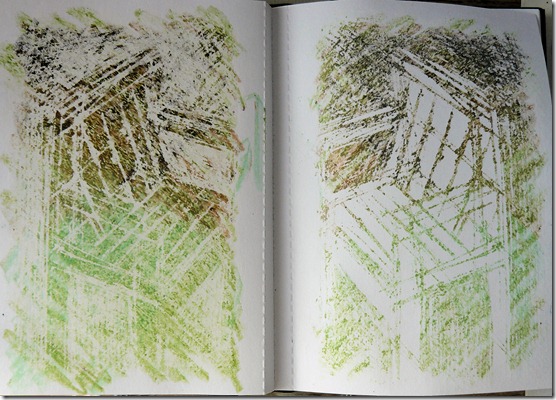
Art, the use of skill and imagination in the creation of aesthetic objects, environments, or experiences that can be shared with others.
ReplyDeleteIt encompasses a diverse range of human activities, creations, and modes of expression, including music, literature, film, photography, sculpture, and paintings.
Your blog totally matches this definition and I promise I'll come back. I also suggest you check out this blog I just saw, I think it's great as well: Drawings Paintings Prints
Will be coming back,
Cheers!